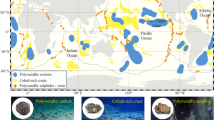Abstract
Based on a 3-D Finite Volume Coastal Ocean Model (FVCOM), tidal dynamics has been studied in the sea area around the Phase III Project of Maji Mountain Port (MMP). Furthermore, taking typhoon “Canhong” as an example, a storm surge and sediment model has also been established to study the impact of the Phase III Project on current flows and siltation during extreme weather. Tidal currents before and after the project have been compared. Model results show that the changes of tidal current mainly occur in the engineering areas with a magnitude change of 0.3–0.4 m/s during maximum flood and ebb tides. The flow condition for the port has been improved as the flow direction is changed to parallel to the wharf after the completion of the project. There is little siltation in the adjacent area, which will not affect the safety of ship navigation. Besides, the sudden siltation during typhoon period is relatively weak. The back silting in two days is less than 5 cm indicating no sudden siltation occurs.
Similar content being viewed by others
References
Chen Changsheng, Beardsley R C, Cowles G. 2006. An unstructured grid, finite-volume coastal ocean model (FVCOM) system. Oceanography, 19(1): 78–89
Cui Zheng, Xu Xiao, She Xiaojian, et al. 2008. Analyses on flow condition along extended Majishan unloading harbor in Bao Steel. Hydro-Science and Engineering (in Chinese), (4): 32–38
Feng Haifang, Kuang Cuiping, Liu Shuguang, et al. 2008. Numerical simulation and analysis of the effect of Huanghua harbour on tidal flow. Journal of North China Institute of Water Conservancy and Hydroelectric Power (in Chinese), 29(4): 20–24
Fu Gui, Li Jiufa, Dai Zhijun, et al. 2007. Study of tidal flow numerical simulation on the reclamation project of Nanhuizui beach. Transactions of Oceanology and Limnology (in Chinese), (4): 47–54
Gao Feng, Zhang Hongyang, Liu Haicheng, et al. 2010. Numerical modeling of tidal current and sediment of reconstruction and extension projects of wharf in Beilun power plant. Journal of Waterway and Harbor (in Chinese), 31(1): 12–19
Ji Rongyao, Lu Yongjun, Zuo Liqin. 2015. The sea engineering hydrodynamic impact study of Shengsi center fishing port. In: Zuo Qihua, Dou Xiping, eds. The Seventeenth China Ocean (Shore) Engineering Symposium (in Chinese). Beijing: China Ocean Press
Liu Zhongjun, Liu Aizhen, Yu Kechen. 2012. Influence of land reclamation on hydrodynamic environment in Tianjin area. Journal of Waterway and Harbor (in Chinese), 33(4): 310–314
Liu Jiaju. 2012a. A unified computation method of siltation for dredged approach channel in different sediment beaches. The Ocean Engineering (in Chinese), 30(1): 1–7
Liu Jianqiang. 2012b. Mumerical study on the environment effects of marine engineering on the mouth of Xiaoqing River in Laizhou Bay (in Chinese) [dissertation]. Qingdao: Ocean University of China
Liu Xiao, Feng Xiuli, Liu Jie. 2016. Hydrodynamic evolution characteristics of southwest Laizhou Bay under the effect of port construction. Marine Sciences (in Chinese), 40(3): 138–145
Song Dehai, Bao Xianwen, Zhu Xueming. 2009. Three-dimensional numerical simulation of tidal current in Qinzhou Bay. Journal of Tropical Oceanography (in Chinese), 28(2): 7–14
Wang Hongli, Liu Xiaoyu, Hai Reti. 2006. Effects of ironstone harbour on environmental characteristics of sea area—a case of Majishan ironstone transfer harbour. Environmental Science & Technology (in Chinese), 29(S1): 102–104
Wang Jianfeng. 2014. Impact of diversion dike in Yangshan Western Port upon flow field and sediment transport (in Chinese) [dis sertation]. Nanjing: Hohai University
Wen Chunpeng, Liu Tao. 2015. Numerical study on the effect of breakwater construction on tidal flow and sediment. In: Proceedings of the 6th International Conference on Intelligent Systems Design and Engineering Applications. Guiyang, China: IEEE, 538–541
Xie Jie. 2011. Numerical simulation of tidal current and sediment in Tieshan port district. Port & Waterway Engineering (in Chinese), (3): 1–9
Zhang Shenyang, He Wenliang. 2013. Tidal current analysis of Majishan harbor. Zhejiang Hydrotechnics (in Chinese), 41(5): 23–24
Zhang Wei, Liu Ran, Qian Wei, et al. 2014. Influence of large-scale coastal engineering on hydrodynamics and sediment transport. Journal of Waterway and Harbor (in Chinese), 35(1): 1–7
Zhu Junzheng, Cao Ying. 2010. Application of FVCOM for computation of 3D tidal flow and salinity in Xiangshan Bay. Marine Environmental Science (in Chinese), 29(6): 899–903
Author information
Authors and Affiliations
Corresponding author
Rights and permissions
About this article
Cite this article
Jin, Z., Zuo, C. & Wang, Z. Impact of Phase III Project of Maji Mountain Port on sediment siltation in adjacent sea area. Acta Oceanol. Sin. 36, 111–118 (2017). https://doi.org/10.1007/s13131-017-1074-3
Received:
Accepted:
Published:
Issue Date:
DOI: https://doi.org/10.1007/s13131-017-1074-3




